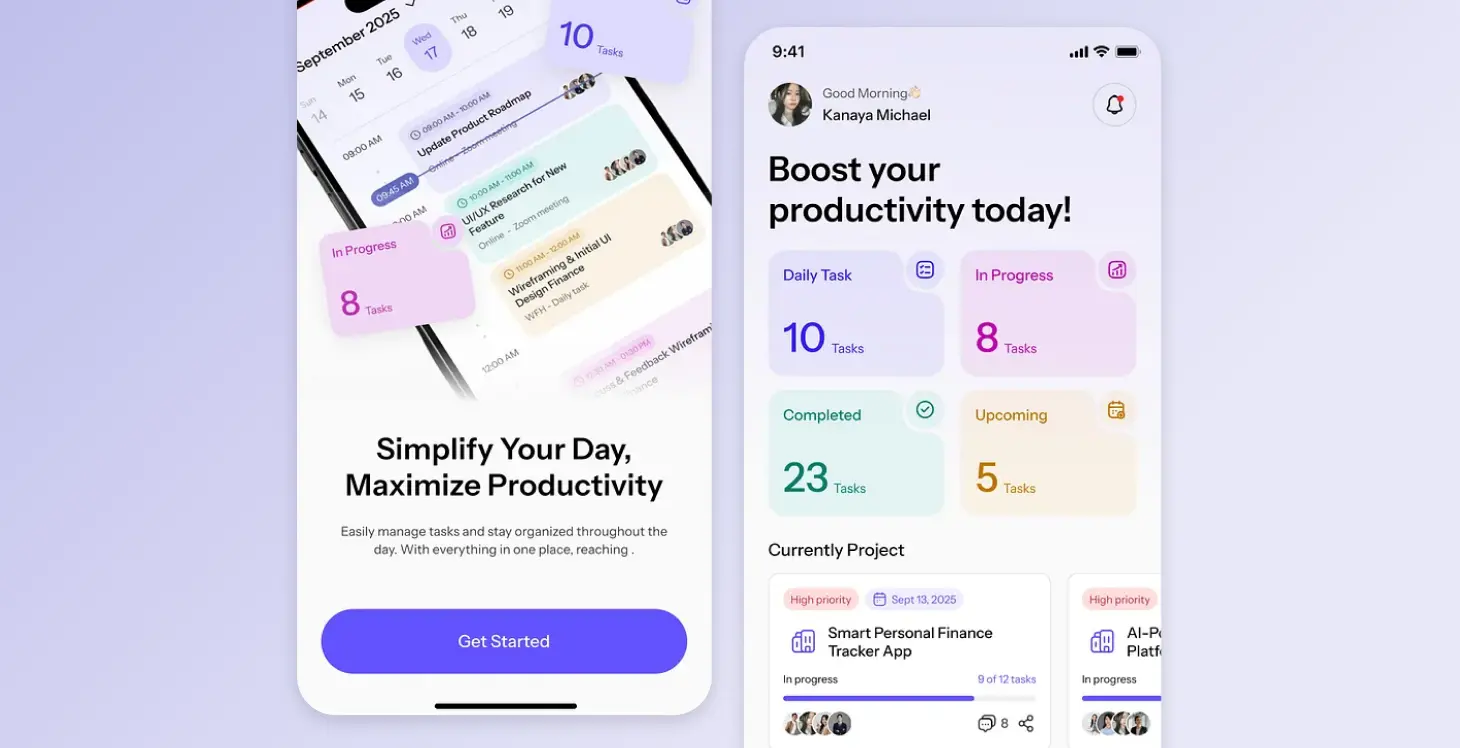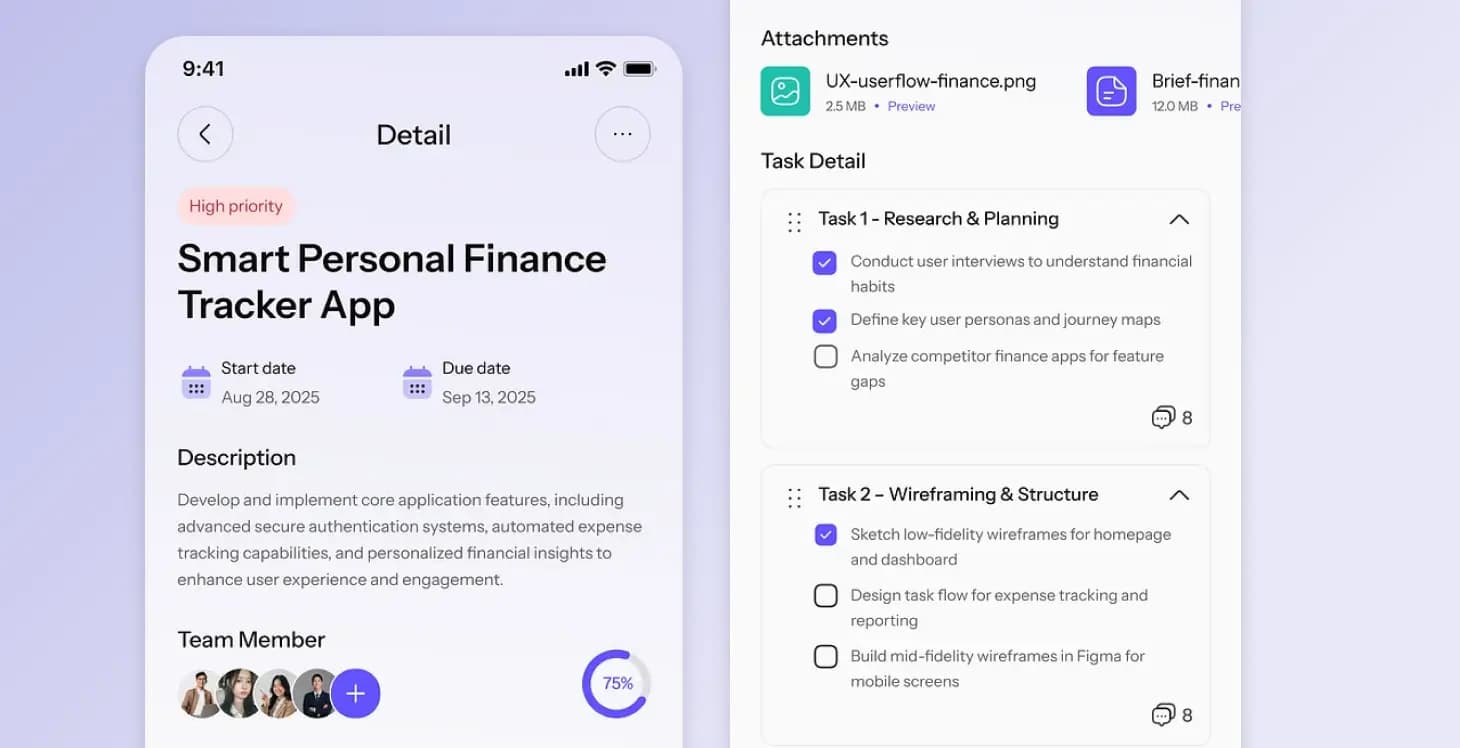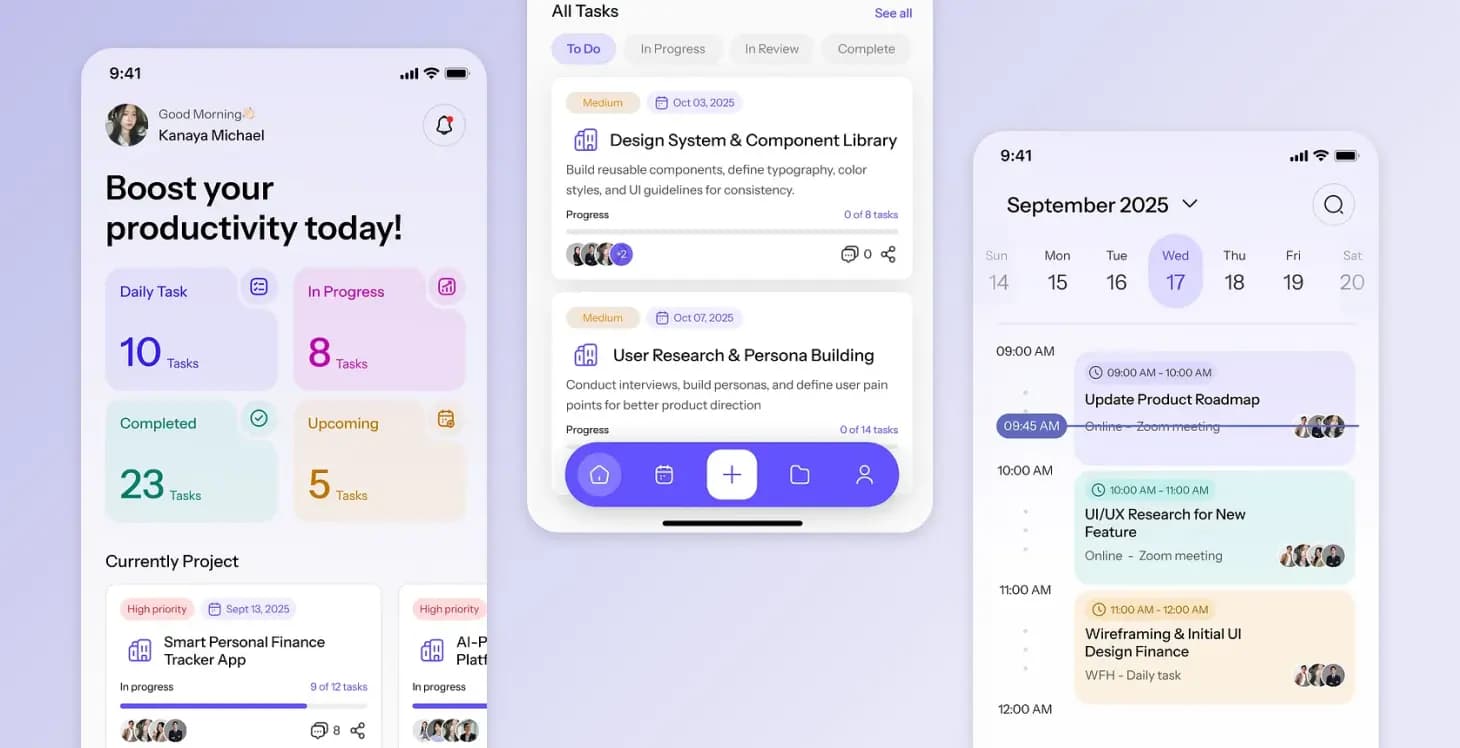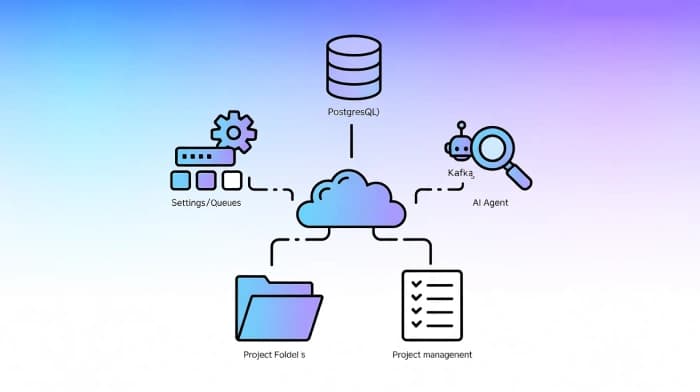


Project Overview
We developed a comprehensive productivity tool through blockchain consulting that addresses the fundamental challenges users face with fragmented task management systems. Our solution integrates behavioral psychology principles with seamless cross-device synchronization to create a cohesive productivity ecosystem that actually helps users form lasting habits and complete their goals.
Problem Statement
Users faced difficulties with using productivity tools that were not cohesive or effective in aiding habit formation and lacked synchronization across different devices. This caused tasks to be left incomplete and led to a lack of disciplined planning among users.
Personal productivity tools encounter a hurdle converting user goals into changes in behavior. Unlike conventional task organizers that fall short by focusing solely on structure rather than tackling the psychological obstacles hindering task accomplishment.
Current Challenges
Fragmented Tool Ecosystem
Users often found themselves using a variety of apps to manage tasks, track habits, plan their calendar and stay motivated. This fragmented tool ecosystem led to:
- Increased effort and scattered data
- Overall efficiency reduction
- Missed tasks and duplicated efforts
Device Synchronization Issues
The lack of connectivity across devices caused issues like:
- Missed tasks when moving between mobile devices, wearables and desktop platforms
- Disrupted workflow continuity
- Challenging transitions for users
Lack of Behavioral Psychology Integration
Behavioral psychology studies show that motivation and habits play a crucial role in task completion. However, productivity apps tend to prioritize having lots of features rather than engaging users psychologically, leading to:
- Quick app abandonment
- Poor long-term results
- Lack of habit formation support
Traditional to-do lists did not provide motivation for people to stay engaged in their tasks over time and often led to abandonment rates when trying to achieve long-term goals or form new habits.
Solution Design
Designed a task management system with a focus on usage that incorporates elements of behavioral psychology strategies and template-based planning while ensuring synchronization with smartwatches for consistent user engagement behaviors.
Core Design Philosophy
The solution architecture focused on prioritizing accessibility through a mobile-first approach while ensuring rich functionality across different device contexts. The system was created with mobile interaction patterns as the core experience rather than considering mobile as a scaled-down version of desktop functions.
Key Features
Motivational System Integration
The motivational system combines elements of gamification with progress tracking and behavioral reinforcement strategies based on studies of habit building and goal achievement. It incorporates features like:
- Streak monitoring
- Reward systems
- Personalized motivation that adjusts to user habits and actions through AI integration
Template-Based Task Management
Users could solve workflow issues by creating templates for tasks that support various scheduling options and adapt automatically based on user preferences and completion history.
Cross-Device Synchronization
The synchronization across devices utilized an event tracking system that kept everything in sync between apps and smartwatches even when offline, ensuring smooth transitions without losing data.
Transform Your Productivity Today
Experience seamless task management across all your devices with behavioral psychology integration.
Technical Architecture
Mobile Application Layer
The mobile app layer includes native iOS and Android apps developed using the React framework to offer a seamless cross-platform experience while allowing access to unique features such as:
- Push notifications
- Biometric security measures
- Deep system integration
Backend Infrastructure
API Gateway and Service Mesh
- Efficient management of APIs and GraphQL queries
- Rate limiting and authentication middleware for security
- Circuit breakers and observability features
Event Streaming System
The system processes task state changes and user interactions using an Apache Kafka based event streaming system that handles:
- Synchronization events efficiently
- Real-time updates and offline queue management
- Event replay functionality to resolve synchronization conflicts
Database Architecture
Smartwatch Integration
The smartwatch integration emphasized notifications and quick task interactions while passively tracking habits. This strategy was tailored for the specific limitations and usage behaviors of wearable devices, managing:
- WatchOS and Wear OS integration
- Data size limitations
- Battery efficiency concerns
- Simplified interaction models
Database Technology Stack
| Technology | Purpose | Key Features |
|---|---|---|
| PostgreSQL | Transaction records | ACID compliance, complex queries |
| Redis | Session management | Real-time synchronization status, caching |
| Elasticsearch | Search and analytics | Efficient indexing, scalable queries |
Development Process
Staged Development Approach
The development process was carried out in stages:
- 1.Mobile-centered design confirmation through user testing
- 2.Behavioral analysis implementation
- 3.Essential task management features
- 4.Gamification elements addition
- 5.Cross-device synchronization integration
Testing Strategy
A thorough testing approach was implemented covering:
- Unit tests for business logic validation
- Integration tests for API functionality
- Platform-specific testing on both iOS and Android
- Extensive synchronization testing across devices
- Conflict resolution algorithm validation
Security Implementation
Security features include end-to-end data encryption, OAuth 2 authentication with token rotation, API security measures with input validation, and external penetration testing validation through enterprise blockchain protocols.
Results and Impact
User Engagement Metrics
- 68% boost in task completion rates
- 45% rise in the duration of habit streaks
- 89% increase in daily active user retention rate
- 30-day retention jumped from 23% to 67%
Productivity Improvements
- Average productivity rates increased to 69% (up from 41%)
- 34% boost in average session engagement time
- Significant reduction in workflow interruptions
Performance Achievements
- Synchronization latency maintained under 200ms
- Zero-downtime deployments with automated rollback features through smart contract protocols
- Successful handling of traffic spikes during peak usage
Key Performance Metrics
Task Completion
Boost in completion rates
Habit Streaks
Rise in streak duration
User Retention
Increase in daily active users
30-Day Retention
Up from 23%
Key Learnings
Gamification Balance
Achieving the right balance in incorporating gamification elements was crucial. Users showed positive response to achievement systems but were less receptive to pushy gamification features. Dynamic algorithms through web3 development that adapt to user behaviors proved more successful than fixed reward systems.
Template System Success
Users showed preference for customizable templates focusing on daily routines such as:
- Morning rituals
- Exercise schedules
- Regular work duties
Smartwatch Constraints
Effective smartwatch features prioritized habit tracking and quick actions over complex task manipulation, requiring a complete rethink of task management workflows rather than simple UI adaptation.
Motivation Personalization
Motivation systems are most effective when they appear as personalized choices rather than imposed requirements. Allowing users flexibility to customize or disable gamification features while maintaining essential productivity tools improved long-term engagement across different user personalities.


